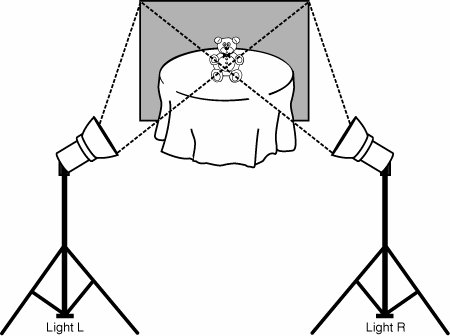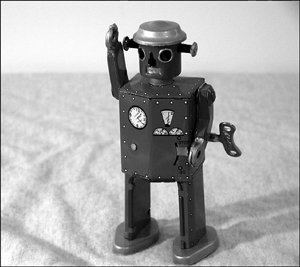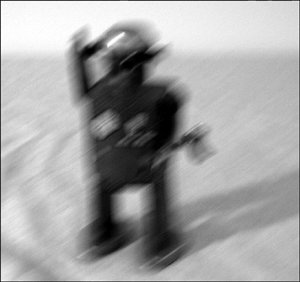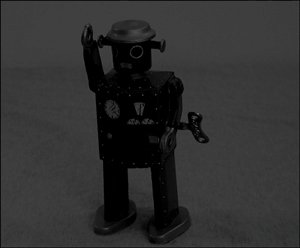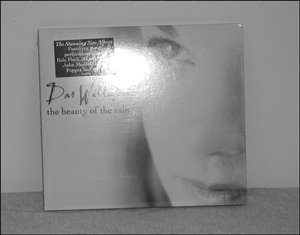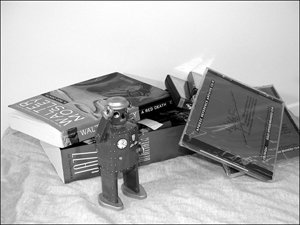Taking Effective Photos
| Taking an effective product photo takes a bit of effort; it's not quite as easy as snapping off a quick Polaroid. To take quality photos of the items you intend to sell, you'll need a decent digital camera and a variety of photographic accessories, including
Let's take a detailed look at what's involved. Shopping for a Digital CameraAlthough you can take pictures with a normal film camera, develop the film, and have a film processing lab transfer your photos to graphics files on a photo CD, that's a lot of work. Much better to start with digital photos at the source by using a digital camera to take all your product photos. You can pick up a low-end digital camera as little as $100 these days, and going direct from camera to computer to eBay is a lot easier than any other method. What type of digital camera should you buy? The good news is that you don't need a really high-end model. In fact, if you buy a super-expensive camera with multi-megapixel resolution, you'll just be wasting a lot of the camera's picture-taking power. When it comes to putting pictures on eBay, you actually need to take relatively low-resolution pictures, so all those megapixels are pretty much photographic overkill. That doesn't mean you can get by with the cheapest camera available, however. To take good product photos, you want a camera with a quality lens, preferably with at least 3X optical zoom, and with a macro mode. (You use the macro mode to take close-up photos of those very small items you have for sale.) Make sure you can easily configure the camera for low-resolution mode and that there's a quick and simple way to get your photographs from your camera to your computer's hard disk. Don't Forget the AccessoriesWhen you're spending $200 or more for a decent digital camera, keep a few bucks back for those accessories that will help you take better photos every time. In particular, you'll want to invest in a tripod and auxiliary lighting. Note A good lighting kit to consider is the KT500 from Smith-Victor (www.smithvictor.com). It includes two 250-watt lamps with 10-inch reflectors and stands, for about $135good enough for most eBay product photography. A tripod is invaluable for steadying your camera when you're taking photographs. A tripod will help you avoid camera shake and corresponding blurry pictures. It's also useful in low-light situations, where you need to hold your camera especially still for long exposures. And it's not expensive; you can pick up a decent tripod for less than $20. Of course, you can avoid the low-light problem by using auxiliary lighting. While you might think you have enough natural light to take good photos, you probably don't. A set of low-cost photo floodlights will provide the lighting necessary to take the ultra-sharp photos your customers expect. You can find two-piece lighting kits for under $150. While we're talking about lights, consider investing a few more bucks for diffuser screens. You get better results when your subject is lit by diffused lighting; direct lighting is a little harsh and can cause glare. Look for a diffuser you can attach directly to your light reflectors. And if you sell a lot of smaller items, you may want to consider some sort of light box. These are small enclosures into which you place the item to be photographed; the enclosure includes internal lighting or diffusion, and you take your photo from an opening on the side or top of the box. You can purchase these light boxes from Cloud Dome (www.clouddome.com), Cubelite (www.cubelite.com), Litesate (www.litestage.com), and similar companies. Finally, think about where you'll be taking your photos. You'll need some sort of flat surface, and some sort of simple backgroundeither flat black or white. That might necessitate buying a small table and an appropriate expanse of colored cardboard or cloth. Even better, although a bit more expensive, is a roll of colored photographic background paper, which provides a professional-looking seamless background. How to Take a Good PhotographOnce you have the proper equipment, taking a good product photo is as simple as following these steps:
The result should be a focused, well-lit, centered photograph, like the one in Figure 23.2. Figure 23.2. A good product photoit's easy to see what you're selling. It's important that you don't just snap off a quick picture and move on. You need to shoot your item from several different angles and distances. And remember to get a close-up of any important area of the item, such as a serial number or a damaged area. You may want to include multiple photos in your listing, or just have a good selection of photos to choose from for that one best picture. Remember, it's always good to have a backup photo, just in case you messed up the first one! Five Types of Pictures Not to TakeOkay, you're saying. You know how to take a good picture. Let's just get on with it! Not so fast, pal. I've seen enough eBay listings to realize that most people who say they know how to take good photos don't. Let's look at five cardinal sins of product photography and how you can avoid them. Blurry PictureSee the photo in Figure 23.3? See how blurry it is? That's because the picture was taken without a tripod. The camera wasn't held steady, and it moved slightly while the photograph was being taken. The result is a blurry photograph where it's hard to see what the product islet alone make out fine details. Figure 23.3. A blurry picturethe result of moving the camera when shooting. A better approach is to mount your camera to a tripod. The results will be clear and crispjust what you want for your item listing. By the way, blurry photos can also result from not focusing the camera lens properly. If your camera has autofocus, make sure that it is aimed at the product, and not at the background or another object. If you're focusing manually, do a better job! Picture Too DarkAnother common mistake amateur photographers make is to shoot the picture without enough light. Figure 23.4 shows the result of inadequate lighting. See how the picture is just too dark, with the details almost completely obscured? Figure 23.4. The picture's too darkyou didn't use enough lighting! How can you ensure that you have enough light for your picture? Here are your options:
Too Much FlashCasual photographers are tempted to use the flash whenever they shoot indoors. Used properly, flash can be a good thing. Too much flash, however, can cause the object to wash out. Flash is also bad when you're shooting a glossy object or a product that's encased in plastic or shrink wrap. Figure 23.5 shows the type of glare you can get from a flash photo. Note Inadequate lightingor shooting under fluorescent lightscan also affect the color of your photos. More light generally results in more accurate colors. Figure 23.5. Flash photography can produce glare on shrink-wrapped products. Subject Too SmallLook at the object in Figure 23.6. It's so far away it seems as if the photographer was afraid to get any closer! You need to get that product up front and center, close enough to the camera so that your customers can see what you're selling. You want the object to fill up the entire picture. That means getting close with your camera, using your camera's zoom lens, or cropping the photo in the editing process. Figure 23.6. Bad compositionthe object's way too small! Subject Doesn't Stand OutYou'd think you'd know better. Shooting your object against a busy background, as shown in Figure 23.7, detracts from the main point of the photograph. The background competes with the object you're trying to sell, which is less than ideal. Figure 23.7. There's too much happening here. What are you trying to sell? It's far better to remove all competing objects from the picture and hang a white or black sheet (or T-shirt) behind the item. This makes the main object stand out betterand increases the sex appeal of your product. |
EAN: 2147483647
Pages: 208
